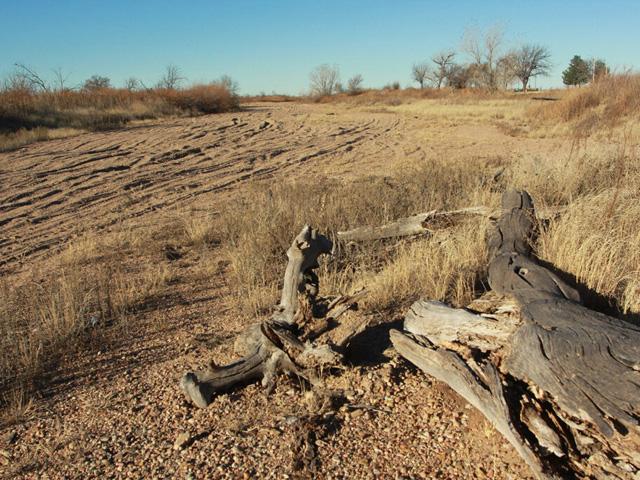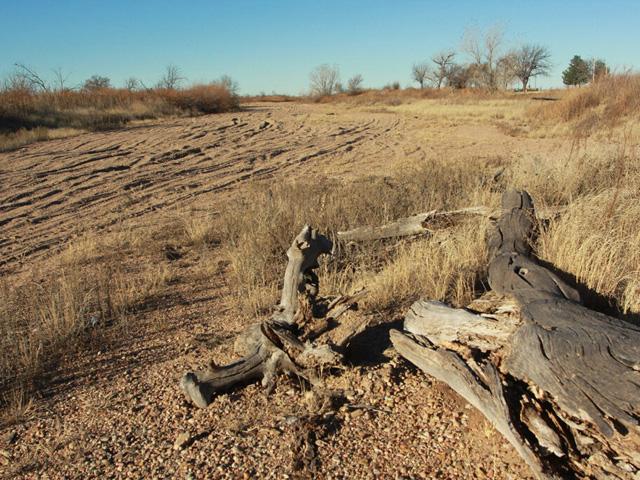Ag Weather Forum
Lack of Support for Kansas Water Management Plan Leaves Declining Ogallala Aquifer
A mid-May article by reporter Allison Kite, first published by the nonprofit Kansas Reflector news organization, outlines the difficult challenges when it comes to putting concerns about a declining resource -- in this case, water -- into laws of management. The water resource in question -- and in decline -- is the Ogallala Aquifer.
Aquifer water levels in western Kansas have been dropping ever since the 1960s when irrigation started ramping up. The aquifer shrank by more than a foot in 2021; one county in far western Kansas only has an estimated 10 years of aquifer water left.
With this background, Kite noted that the Kansas House Water Committee spent a year working on a plan to manage and allocate the dwindling groundwater supply. The committee's study efforts included traveling to Garden City, Kansas, where the bed of the Arkansas River is dry. The committee then drafted a plan to raise water issues to a cabinet-level position, grant more independence to the state's chief engineer and demand more oversight of local agencies charged for decades with stopping depletion of the aquifers.
But nothing happened. A bill to set up the objectives from the year-long water committee's work died without ever being called for debate. Kite's article reported that committee members approved an amendment backed by agricultural groups that essentially gutted the bill. A key detail in the amendment was removing the water management authority of a state-level director and keeping groundwater allocation at the local level -- where it is now.
P[L1] D[0x0] M[300x250] OOP[F] ADUNIT[] T[]
The failure to have groundwater management even discussed at the legislative level in a state with a dramatic decline in water supplies illustrates how resource use and allocation, periodic drought and climate change are creating uncomfortable and disrupting situations for agriculture and its accompanying society.
The May 24, 2022 U.S. Drought Monitor indicated that southwestern Kansas was in either Extreme Drought (D3) or Exceptional Drought (D4). The typical response from a commodity production standpoint is to pump more irrigation water from the Ogallala Aquifer for irrigating crops, pastures and hay fields.
But more irrigating adds to the drawing down of the aquifer. On average, about 2.5 billion gallons of water are pumped out of the Ogallala Aquifer a day in Kansas; from 80 to 90% of that volume goes to irrigation, according to the U.S. Geological Survey (USGS). The Ogallala Aquifer in parts of Kansas, Oklahoma and Texas has already declined by more than 150 feet since pumping for irrigation began during the mid-20th century.
Individual property rights versus the preservation of a shrinking resource will loom over this portion of the Southern Plains throughout the balance of this crop year and likely longer. And recharge will not happen quickly. A report by USDA's National Institute of Food and Agriculture projects that replenishing the Ogallala Aquifer would take 6,000 years at the current rate of use.
Kite's original article is available here: https://nebraskaexaminer.com/…
Details on the decline in Kansas groundwater are available in a previous DTN blog: https://www.dtnpf.com/…
The USDA NIFA Ogallala Aquifer report may be found here:
Bryce Anderson can be reached at Bryce.anderson@dtn.com
Follow him on Twitter @BAndersonDTN
(c) Copyright 2022 DTN, LLC. All rights reserved.






Comments
To comment, please Log In or Join our Community .